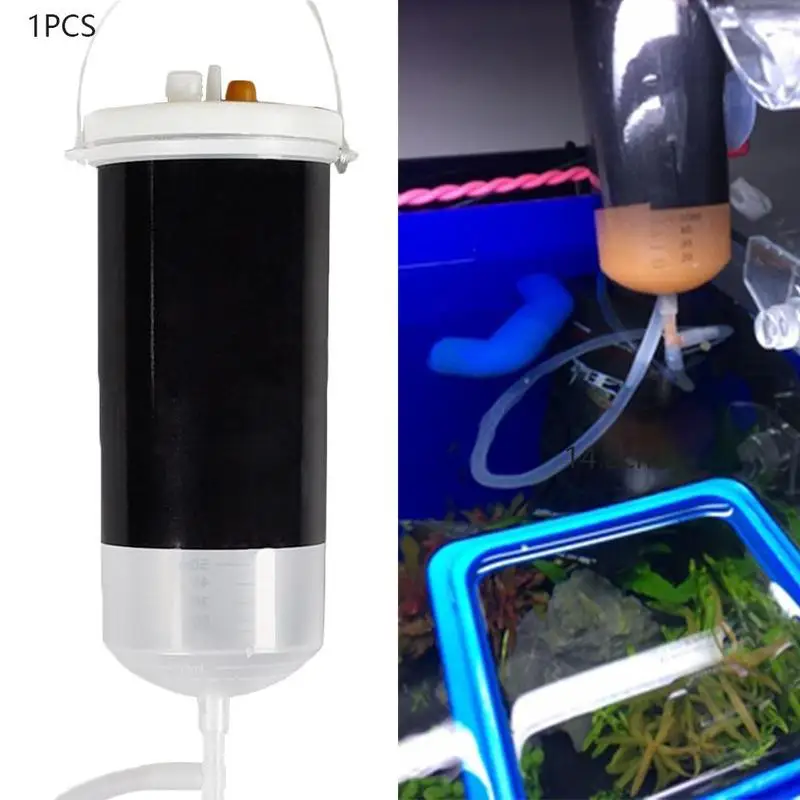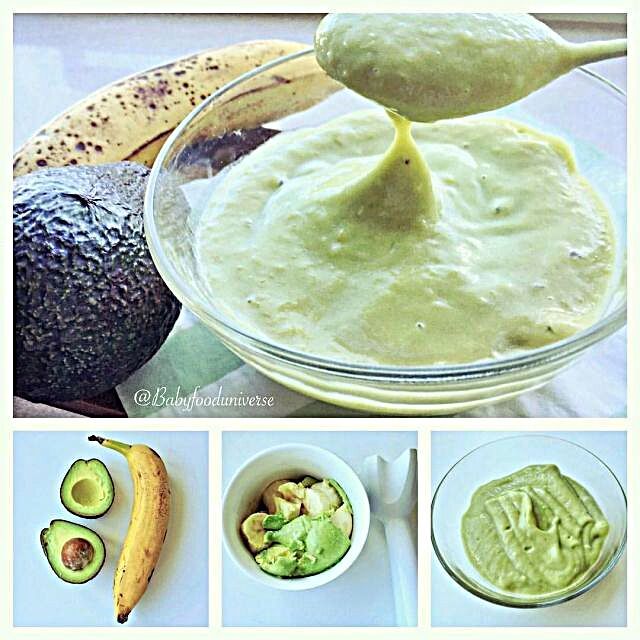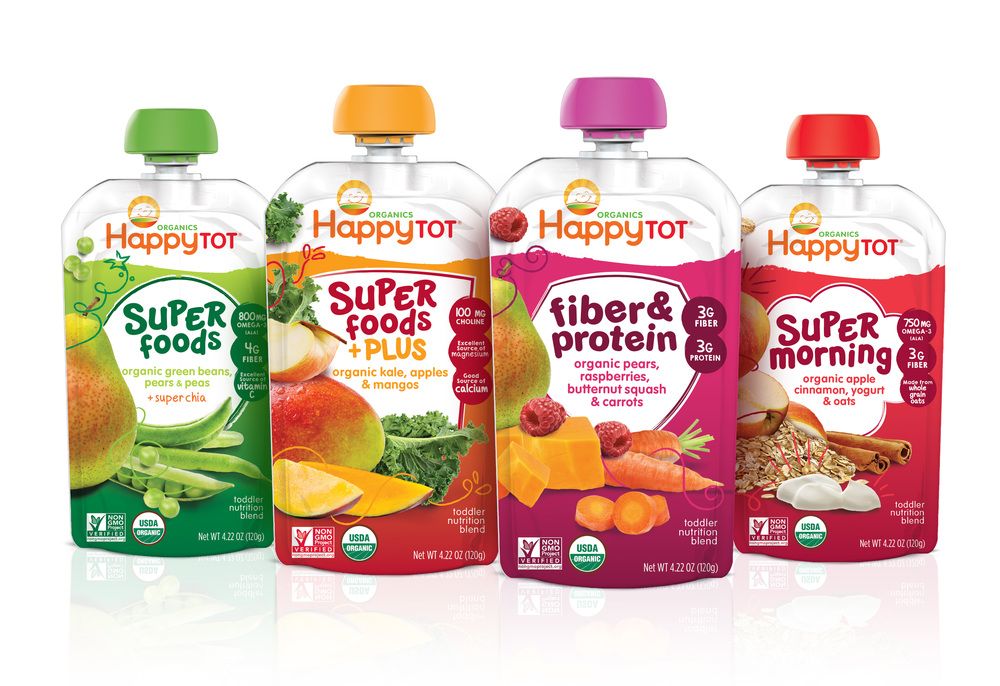What to feed brine shrimp babies
Growing Brine Shrimp for Tropical Fish Food
Brine ShrimpArticle Contents
About Brine Shrimp
Brine shrimp deserve to be considered by the tropical fish industry as the single most important food item in the whole world. This is due to the fact that brine shrimp contain an unbelievably high amount of energy. If not for brine shrimp, the tropical fish industry might not be what it is today. To help larval tropical fish have a good start, newly hatched brine shrimp is used by almost all individuals who breed tropical fish at home as well as at nearly all fish farms.
What Are Brine Shrimp?
Small Crustaceans. Brine shrimp is the common name that refers to a water animal belonging to crustaceans, which are identified by their multiple pairs of legs as well as their hard exterior shell. Commonly used for feeding tropical fish raised in aquariums, brine shrimp usually grow no more than 1.30 centimeters in length. Several varieties of brine shrimp exist, but all of them are considered to belong to a single species under a single genus (Artemis). They are generally characterized by their compound eyes, which are stalked, as well as their tapered bodies, which consist of a trunk to which eleven pairs of leaflike legs are attached.
Adaptable Creatures. Brine shrimp are different from true shrimp and cannot be found in the oceans but they can be found in many bodies of water in the world, especially inland saltwater lakes. What is so fascinating about these crustaceans is their ability to easily adapt to fluctuations in water salinity. Brine shrimp can live without difficulty in a body of water which has a higher salinity level than sea water. They also have high tolerance for a water environment which has only one tenth of the salinity found in marine waters.
Easy Prey. The Great Salt Lake harbors vast windblown lines of brine shrimp, which generally occur in large numbers. Their small size makes them easy prey to larger water animals and this is why they are not found in oceans. Brine shrimp can flourish in inland high salinity habitats, in which their predators do not live.
Bearers of Highly Resistant Eggs. The female brine shrimp carries a brood pouch in its body. Under favorable conditions, the female adult brine shrimp liberates all her active young shrimp from this pouch. Female brine shrimp may also lay their eggs without having them fertilized by sperm. When shrimp eggs do get fertilized, they may hatch right away or are made to undergo a drying process (to make them viable for a number of years). Brine shrimp eggs are able to tolerate harsh environmental conditions; this quality gives them the ability to hatch without difficulty in salt water as well as their usefulness as tropical fish food.
Why Brine Shrimp Is An Essential Food for Tropical Fish
Brine ShrimpA diet which consists of live baby brine shrimp has been tried and tested to be effective in raising many types of tropical fish. There are several reasons for raising brine shrimp to be an ideal food for baby tropical fish (or “fry”). One is the natural movements of brine shrimp, which attracts baby tropical fish into eating them.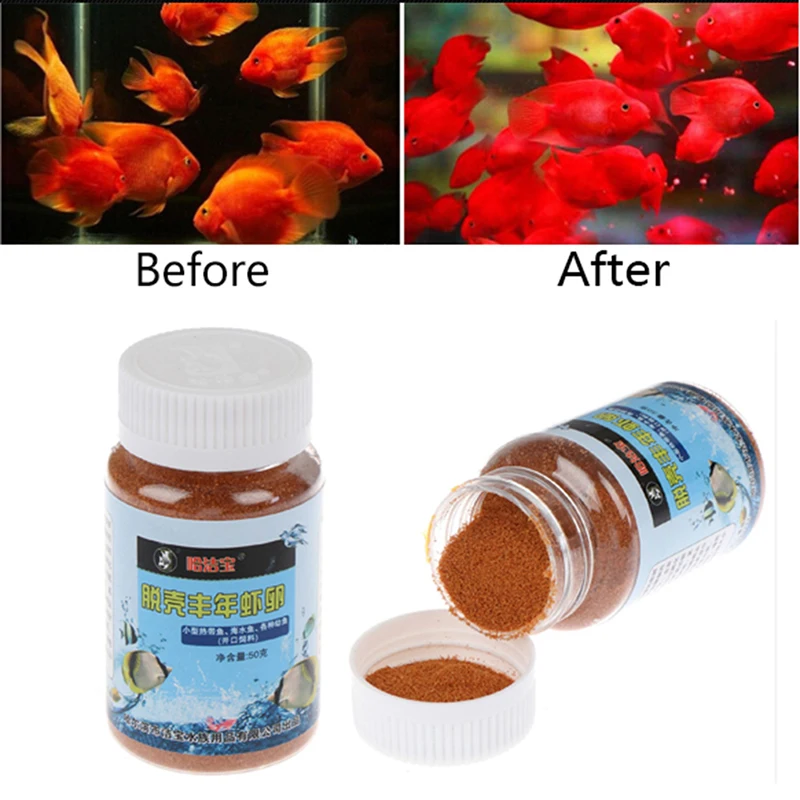 Another reason why feeding brine shrimp is good for baby tropical fish is the naturally high levels of protein that it contains. Brine shrimp is also rich in other nutrients that have not been subjected to any form of processing method, such as those undergone by freeze-dried foods, pellets, and commercial flakes.
Another reason why feeding brine shrimp is good for baby tropical fish is the naturally high levels of protein that it contains. Brine shrimp is also rich in other nutrients that have not been subjected to any form of processing method, such as those undergone by freeze-dried foods, pellets, and commercial flakes.
In addition to that, baby brine shrimp can be easily digested. They also have the ability to survive for several hours when placed in a freshwater tank filled with baby tropical fish. This ensures that the tropical aquarium fish are provided a continuous supply of food and that they get to grow in a tank in which the water chemistry has been maintained. A number of commercial fish foods easily dissolve in water and affect its quality.
How to Make a Brine Shrimp Hatchery
What are referred to as brine shrimp eggs are actually cysts which swell with water when they become wet. The brine shrimp cysts start to hatch at a temperature of 78°F after about eighteen hours to one day. Since the baby brine shrimp have incomplete digestive and excretory systems at this point, they cannot take in and process any food. This, and the fact that their bodies are packed with energy, makes them a perfect food source for tropical fish.
Since the baby brine shrimp have incomplete digestive and excretory systems at this point, they cannot take in and process any food. This, and the fact that their bodies are packed with energy, makes them a perfect food source for tropical fish.
Equipment Needed For Brine Shrimp Care
Raising brine shrimp cysts is a simple process which allows you to easily make your own shrimp hatchery. To construct it, you will need to gather your equipment. A small glass tank will serve as the hatching tank for the baby brine shrimp, and another glass tank that is larger in size will serve as the growing tank.
Other supplies needed include a large stiff plastic sheet, a small tapping screw made of stainless steel, air stones to provide a dedicated air supply for the two glass tanks, a large bag of sea salt, a container filled with shrimp eggs, and a handy flashlight. You may add a third glass tank for brine shrimp care if the plan is to raise brine shrimp to adulthood.
1.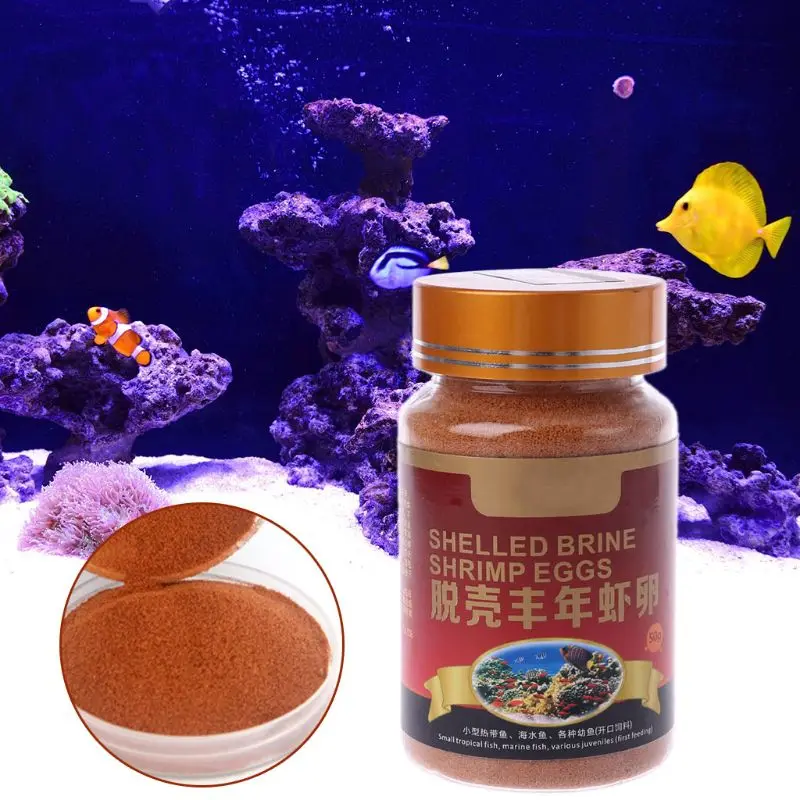 Divide the hatching tank into two parts
Divide the hatching tank into two partsThe hatching tank needs to be divided into two parts, with one part taking up two-thirds of the tank’s area. Use the large stiff plastic sheet for this purpose to serve as the divider. In the center portion of the plastic divider, make a hole that is 1 ½-inch in diameter. This hole will be where the baby brine shrimp will easily swim through. After making the hole, set aside the divider to start working on the tank to use when the eggs hatch.
2. Blacken the two-thirds portion of the tank as well as its lidThe goal here is to create an area without a light source while still allowing light to pass through the remaining one-third portion of the tank.
3. Make a cover for the hole in the tank dividerMake a cover for the hole in the tank divider by cutting a disc of plastic that is big enough to go over it. Then use a drill to make small holes both in the disc and in the divider itself. Doing so will accomplish the idea of having the disc function as an eyehole in the hatching tank that, when swung into position, will cover up the hole in the divider. This prevents light from entering the darkened portion of the tank.
Doing so will accomplish the idea of having the disc function as an eyehole in the hatching tank that, when swung into position, will cover up the hole in the divider. This prevents light from entering the darkened portion of the tank.
Place the divider inside the tank, making sure to get it securely attached and it achieves a snug fit.
5. Measure the entire tank to determine its actual sizeUse the figure in order to calculate how much sea salt is needed to create salt water that is strong enough to allow the baby brine shrimp to hatch. Make sure to follow the instructions indicated in the sea salt bag so that salt levels that are a bit higher than required by marine fish are achieved. Since the chlorine and chloramines in chlorinated water are toxic to the baby brine shrimp, it is important to use only dechlorinated tap water or freshwater.
6. Make the blackened portion of the hatching tank truly darkPlace the eyehole in position so that the blackened portion of the hatching tank for it to become truly dark.
In case the room where the hatching tank for the baby shrimp is placed is cold, have a heater installed in order to maintain a water temperature that hovers between 65 to 70 degrees Fahrenheit.
8. Install the air stonesSet up the air stones inside the hatching tank, specifically in the dark area of the tank. Turn on the air stones after installing them successfully.
9. Add shrimp cysts to the dark portion of the hatching tankPour 1/4 teaspoon of the shrimp cysts to the dark portion of the hatching tank. Ensure that the air stones are functioning well in order to make sure the cysts float on the water’s surface; it is important that the cysts are prevented from setting on the bottom of the tank.
10. Cover the tank and let the eggs floatPlace the lid on the tank and allow the eggs to float on the surface in complete darkness for 12 to 24 hours.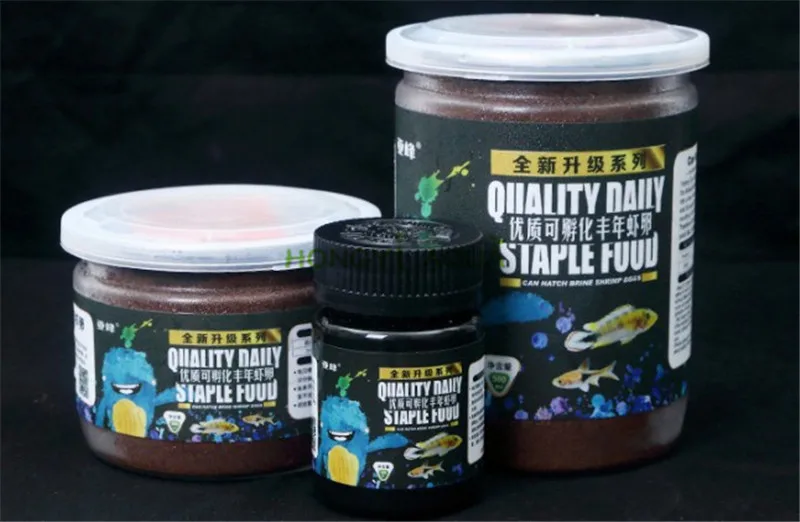 When the time is up, check the baby brine shrimp eggs, which usually hatch after 36 hours to two days.
When the time is up, check the baby brine shrimp eggs, which usually hatch after 36 hours to two days.
Prepare the growing aquarium by filling it with salt water. Make sure it has the same salt concentration as the salt water used in the hatching tank.
12. Do not blacken the growing tank, and do not place any divider in itSince light is beneficial for growing brine shrimp, it is recommended that the growing tank is placed near a light source such as a window.
13. Install an air stone in the growing tankTo ensure water movement inside the growing tank, make sure to install an air stone. If the room in which the growing tank is situated is cold, set up a heater that prevents the water temperature inside the tank from dipping or rising from around 65°F to 70°F.
14. Turn off the air stone inside the hatching tankWhen the eggs have settled, turn off the air stone inside the hatching tank. The moment the brine shrimp have hatched from their eggs, allow the eggs to settle first by turning off the air stone inside the hatching tank. Remember, though, to turn the air stone back on at a later time. Open the eyehole the moment the brine eggs have settled on the bottom of the tank.
The moment the brine shrimp have hatched from their eggs, allow the eggs to settle first by turning off the air stone inside the hatching tank. Remember, though, to turn the air stone back on at a later time. Open the eyehole the moment the brine eggs have settled on the bottom of the tank.
Encourage the brine shrimps to swim through the eyehole by turning on a flashlight and placing it near the non-darkened portion of the aquarium. Doing this will get the live brine shrimp transferred to the light side of the tank while keeping the dead shrimp as well as any unfertilized or unhatched eggs and empty shells within the darkened area.
16. Remove the live brine shrimp by carefully siphoning them offTransfer them to a net, and then place them in the growing tank (Some of the live brine shrimp can be set aside in order to be used for tropical fish to eat).
17.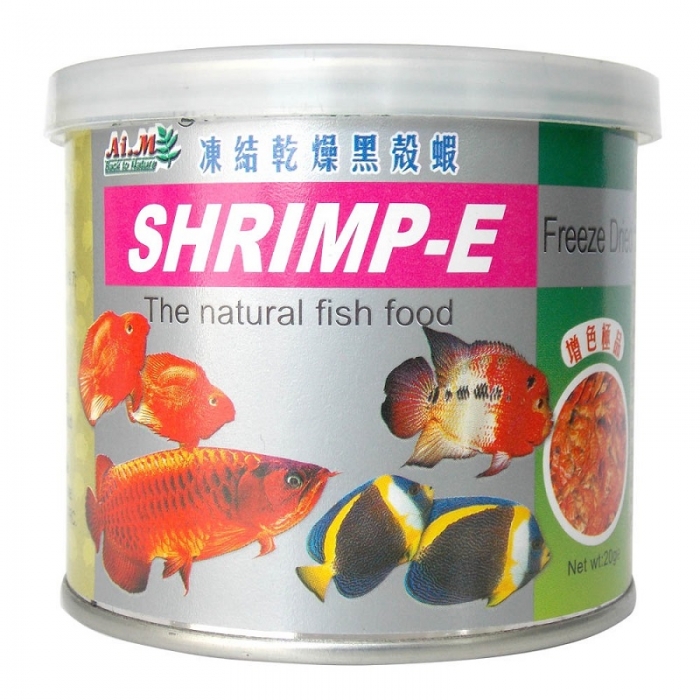 Remove unhatched brine shrimp eggs, shells, and dead brine shrimp
Remove unhatched brine shrimp eggs, shells, and dead brine shrimpIt is important to remove any unhatched eggs, shells, and dead brine shrimp from the darkened part of the hatching tank. To keep the shrimp hatchery going, some new eggs should be added each time the tank is cleaned.
How Long It Takes to Hatch Brine Shrimp Eggs
It usually takes 24 hours for eggs to hatch at temperatures of 80°F to 82°F. Getting any lower from these temperatures should be avoided; otherwise, this will result in longer hatching periods. It is also important not to go beyond a temperature of 86°F, or else it would risk damaging the young shrimp.
Feeding Brine Shrimp
Besides raising brine shrimp (at their baby stage) to feed tropical fish, they can also become adult brine shrimp when fed properly. Because the digestive system of a brine shrimp is not yet fully developed in the first 24 hours of its life, no feeding is needed yet during that time. Growing brine shrimps are actually easy to feed since they are not fussy when it comes to their food. One can feed them almost any type of food such as whey, yeast, commercial fry food, soybean powder, wheat flour, spirulina powder, fish meal, and even egg yolk. What is important is that the food used in feeding them is easily digestible by the shrimps but not easily dissolved in water, which is why powdered milk is not an option. One should also avoid overfeeding the brine shrimps as doing so can damage the water quality in the growing tank.
One can feed them almost any type of food such as whey, yeast, commercial fry food, soybean powder, wheat flour, spirulina powder, fish meal, and even egg yolk. What is important is that the food used in feeding them is easily digestible by the shrimps but not easily dissolved in water, which is why powdered milk is not an option. One should also avoid overfeeding the brine shrimps as doing so can damage the water quality in the growing tank.
How to Feed Brine Shrimp to Baby Tropical Fish
Many young tropical fish will only eat the food fed to them if that food is moving. As soon as the baby brine shrimp are hatched, stop the aeration process inside the tank by unplugging the air pump, allow the baby brine shrimp immediately to settle, siphon them out, place them in a net, and then feed them directly to the baby tropical fish by pouring into their aquarium.
How to Feed Brine Shrimp to Grown Tropical Fish
The one thing to keep in mind when feeding grown tropical fish is that the wild brine shrimp need a rinse before use. Rinse them under tap water and then place them in a container filled with water taken from the tropical fish aquarium. Doing so will help get the brine shrimps cleaned as well as prevent any trouble with changes in acidity. Similar to feeding the baby tropical fish, one should follow the rules on not overfeeding grown tropical fish.
Rinse them under tap water and then place them in a container filled with water taken from the tropical fish aquarium. Doing so will help get the brine shrimps cleaned as well as prevent any trouble with changes in acidity. Similar to feeding the baby tropical fish, one should follow the rules on not overfeeding grown tropical fish.
How to Raise Brine Shrimp
Table of Contents:
- Raising Brine Shrimp: Getting Started
- Circulation and Aeration
- Lighting, Temperature and Water Quality
- Maintenance
- Brine Shrimp Lifecycle
- Harvesting Your Brine Shrimp
- Feeding Your Brine Shrimp
Because of the variety of new and specialized fish food products, fish owners rarely think about raising food for their pets, but it is quite possible to do. Although you should have some experience with a saltwater system as well as a certain level of creative innovation for such an undertaking, raising live food such as brine shrimp can be rewarding.
Brine shrimp are a popular species to culture at home because it is relatively easy to keep a population of them – especially if you know a little about how they live. These zooplankton are also called artemia, and like shrimp, crabs and lobster, are a kind of crustacean.
Following these basic guidelines and combining them with your experience, you can maintain a healthy stock of brine shrimp. Once you’ve tinkered your way to a system that works, you can just kick back and watch yet another of nature’s scenes unfold as your fish chase after and gobble up their homegrown prey.
Raising Brine Shrimp: Getting Started
You should begin with a 10-gallon glass tank. Take a thin sheet of acrylic or formica, slightly bigger than the tank dimensions and jam it into the bottom of the tank so it creates a concave surface. Seal the seams around the acrylic with silicone. You want to eliminate corners which become dead spaces that will inhibit water circulation and collect hatched shells and other waste. To enhance circulation, depending on how creative you want to get, you can glue a partition in the center of the tank, forming a raceway.
To enhance circulation, depending on how creative you want to get, you can glue a partition in the center of the tank, forming a raceway.
Circulation and Aeration
Setting up a circulation system can be tricky. To grow healthy adult brine shrimp, strong aeration and good water circulation are essential. You will need to come up with a way to rig your pump so that water is continually circulating through all regions of the tank. If you use airstones, use only those that make large bubbles because brine shrimp will ingest small air bubbles (or they lodge in their swim-appendages), which forces them to the surface where they will eventually die.
Lighting, Temperature, and Water Quality
Brine shrimp are attracted to light so use a low light level, otherwise they will expend much of their energy (which lowers their quality) in an effort to remain near the light source. A 60- to 100-watt light will suffice but hatching will require higher light levels (2000 lux constant illumination). Optimal temperature conditions range from about 77 to 86 degrees Fahrenheit, depending on the strain that is cultured. They prefer a salinity between 30-35 ppt and a pH of around 8.
Optimal temperature conditions range from about 77 to 86 degrees Fahrenheit, depending on the strain that is cultured. They prefer a salinity between 30-35 ppt and a pH of around 8.
Maintenance
To keep water quality adequate, change about 20 percent of the water each week and clean the bottom of the tank every few days. To do this, turn off the air and let the tank settle. Shine a flashlight at the surface and wait a moment as the artemia are drawn to it. Siphon off the material on the bottom, consisting mainly of molted shells.
Brine Shrimp Lifecycle
Start out by purchasing a packet of dehydrated brine shrimp cysts at an aquarium or pet shop. These cysts can stay viable for many years, providing they are kept dry and unexposed to the air – a container in the refrigerator keeps them well. The cysts contain dormant embryos that will resume their development once they have been placed in water.
After 15 to 20 hours in water that is about 77 degrees Fahrenheit, the cysts burst and the embryo leaves the shell.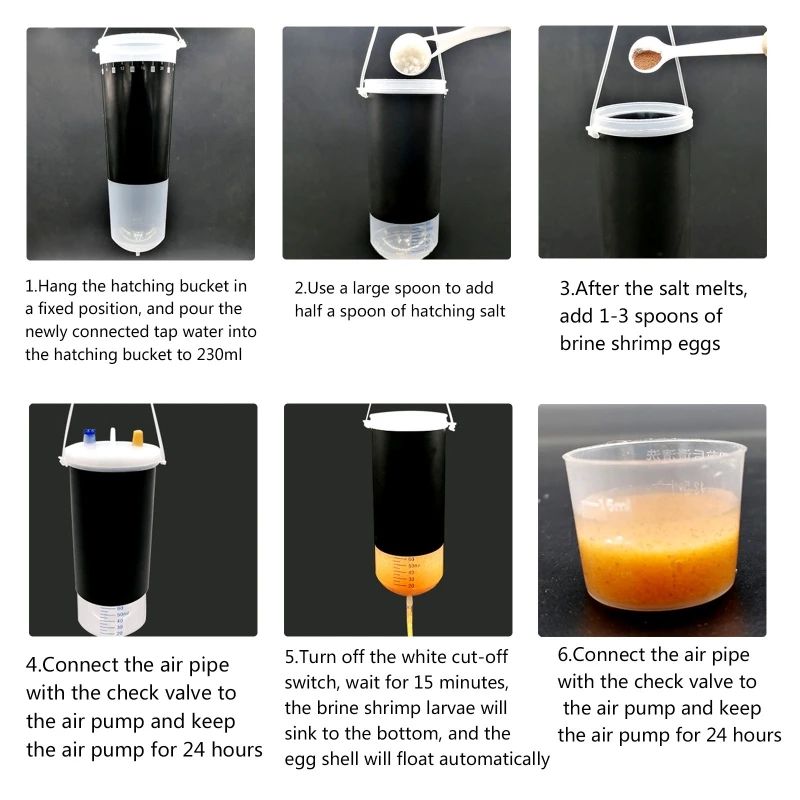 In this “umbrella” stage, the embryo hangs beneath the cyst shell, still enclosed in a membrane.
In this “umbrella” stage, the embryo hangs beneath the cyst shell, still enclosed in a membrane.
Once it separates from its shell, it becomes a free-swimming young shrimp called a nauplii. It is brownish in color from the yolk it carries to complete its development. After about 12 hours, these nauplii molt and begin to feed normally, filtering tiny particles such as microalgae and bacteria, out of the water.
It takes about eight days and 15 molts for nauplii to reach adulthood. In low salinity and good food conditions, females will produce 10 to 11 broods of a few hundred free-swimming nauplii over about 50 days. Adult brine shrimp get to be about 8 mm long, but in the right environment can reach 20 millimeters.
Throughout their lifecycle, brine shrimp change in quality, a big consideration for the aquarist. Newly hatched shrimp are rich in fat (about 23 percent dry weight), which is used up as they develop (dropping to about 7 percent as pre-adults).
Adult brine, however, are high in protein: about 63 percent compared to 45 percent for the nauplii. So, if you have young fish, which require a high-fat diet for growth, you need to harvest nauplii. But if your tank has many older juveniles and adults, which require a high-protein diet for health and reproduction, adult brine shrimp are better.
So, if you have young fish, which require a high-fat diet for growth, you need to harvest nauplii. But if your tank has many older juveniles and adults, which require a high-protein diet for health and reproduction, adult brine shrimp are better.
Harvesting Your Brine Shrimp
To harvest the nauplii, turn off the air and let the stock settle for about 10 minutes. Hatched empty shells will float to the surface; unhatched cysts will sink to the bottom. The napulii will also concentrate on the bottom. Since they are attracted to light, use a flashlight to herd them to where you can scoop them out with a paper cup. Harvesting the adults can be done in much the same way, and the larger adults can be caught in mesh nets. Unhatched cysts can be collected and used for another batch or saved in case something goes wrong and you need to start over.
Feeding Your Brine Shrimp
Brine shrimp are filter-feeders and consume particles in the water column as well as inert nutrients. Newly-available enrichment formulas such as Selcon are highly recommended, but you can feed the shrimp fish meal, egg yolk, whey, soybean powder or wheat flour. Dried algae such as spirulina can also be used. Do not overload the tank with inert foods, it leads to fouling and low oxygen levels. Continuous drip-feeding is best. Small amounts several times a day also works.
Newly-available enrichment formulas such as Selcon are highly recommended, but you can feed the shrimp fish meal, egg yolk, whey, soybean powder or wheat flour. Dried algae such as spirulina can also be used. Do not overload the tank with inert foods, it leads to fouling and low oxygen levels. Continuous drip-feeding is best. Small amounts several times a day also works.
Artemia (Artemia salina), fish food, crustaceans, brine shrimp eggs, breeding brine shrimp, brine, brine shrimp nauplii, hatching of brine shrimp, feeding aquarium fish cm length. It is common in salt water reservoirs in the southern regions of Russia (Stavropol, Altai, Kalmykia, etc.) and on their banks you can find whole egg rolls along with parts of dead plants. Eggs are collected in a net with a double mesh. The inner cone is made from mesh N 12, which retains litter, and the outer cone is made from mesh N 60, 61, in which eggs are collected. They are thoroughly washed in water, dried and kept at 2-5 ° C for several days (but not in a home refrigerator), as Salmonella bacteria may be present there.

Artemia eggs are often commercially available and can be stored for a long time in a dry and cool place. Juvenile Artemia is an excellent food for fry and small fish species. At the same time, it should be taken into account that Artemia nauplii stay in lighted places and if the fry hide in the dark, they will be left without food. Artemia nauplii live no more than 6-8 hours in fresh water.
Artemia (Artemia salina)
20 g of table salt per 0.5 l of water), add a teaspoon (without a slide) of brine shrimp eggs and close with a stopper, in which 2 holes are inserted with plastic tubes passed through them. A sprayer is put on one of them, on the end immersed in water to the very bottom, and the other end is connected to the compressor. Another tube, short, does not reach the surface of the water and serves to remove air. A strong current of air ensures that the eggs are mixed, and in order for them not to accumulate at the neck of the bottle, it is shaken from time to time. Maturation of the first batch of crustaceans at a solution temperature of 24-25 ° C occurs after 36-40 hours.
Maturation of the first batch of crustaceans at a solution temperature of 24-25 ° C occurs after 36-40 hours.
To collect them, turn off the air supply and place the bottle with a slight inclination for 4-5 minutes, so that the crustaceans have time to settle to the bottom. Then another cork with 2 tubes is inserted into the bottle, one of which is connected to the compressor and does not reach the surface of the water. One end of the second tube goes to the bottom of the bottle, and the other is connected to a glass jar closed with a fine mesh (NN 73, 76). The compressor is turned on and the water is drained into a jar, and the crustaceans remain on the grid. After rinsing with water, they can be fed to fish. The solution from the jar is poured back into the bottle and the operation can be repeated 1-2 more times. A new solution is prepared for each new batch of eggs. The disadvantage of this method is not a very high percentage of the exit of crustaceans from eggs and the inability to completely get rid of the egg shells, which, remaining in the net and getting into the intestines of the fry, can cause unpleasant consequences.
Artemia (Artemia salina)
2. Asterman developed a method for breeding and capturing Artemia nauplii, which not only increased the yield of crustaceans, but also ensured reliable separation of the shell. The dilution vessel is glued from an opaque material (eg vinyl plastic or colored plexiglass) and only the side and rear walls of chamber II are made of transparent plexiglass. Eggs are loaded into chamber I and the crustaceans emerging from them through the lower slot and holes in the intermediate wall penetrate into the illuminated chamber II, from where they are caught with a net. This transition occurs especially intensively if aeration is turned off for a few minutes.
To increase the percentage yield of crustaceans, eggs can be preliminarily treated with 1.5-3% hydrogen peroxide solution for 15 minutes before incubation, followed by drying.
Increasing the yield of crustaceans can also be achieved by decapsulation, i.e. decomposition of the egg shell. To do this, dry eggs are soaked for 1 hour in fresh water, and then placed in the following solution: 50 g of hypochlorite, 35 g of sodium carbonate in 1 liter of water. The ratio of eggs and solution is 1:10. The components are thoroughly mixed for 1-1.5 minutes. As the shell dissolves, the eggs turn orange. They are stored in a dry place in a closed package. Decapsulated eggs can be fed to fry. Eggs before feeding are washed for 8-10 minutes with running warm water.
To do this, dry eggs are soaked for 1 hour in fresh water, and then placed in the following solution: 50 g of hypochlorite, 35 g of sodium carbonate in 1 liter of water. The ratio of eggs and solution is 1:10. The components are thoroughly mixed for 1-1.5 minutes. As the shell dissolves, the eggs turn orange. They are stored in a dry place in a closed package. Decapsulated eggs can be fed to fry. Eggs before feeding are washed for 8-10 minutes with running warm water.
Tags: fish, aquarium fish food, aquarium fish food
Top 10 live food for aquarium fish | Aquarium World
If you are looking for the very best food for aquarium animals, most experienced aquarists will agree that there is nothing better than live food. This premium quality food is the closest to what fish eat in nature and has many benefits. The movement of food encourages fish to eat, which is especially useful if they are underweight or growing and need to consume more nutrients than usual.
In addition, hunting enriches your aquarium animals both physically and mentally, and allows you to see interesting behavior that may not be shown when feeding flakes. Finally, live foods are one of the fastest ways to prepare fish for breeding. Learn about these 10 popular live foods and how to grow some of them at home.
1. Artemia baby shrimp
Peacock minnow fry eat brine shrimpWhen it comes to raising fry or encouraging adult fish to spawn, you can't beat brine shrimp babies. These tiny marine crustaceans are born with highly nutritious yolk sacs filled with protein and healthy fats. To hatch them at home, simply soak brine shrimp eggs in salt water, which will take about 18-36 hours at a water temperature of 23-28°C. When you see hundreds of tiny pink dots floating around, shine a light on the base of the hatchery to attract brine shrimp and separate it from the eggshell.
2. Snails
Sand snails Many fish, such as pufferfish, char and larger South American cichlids, like to eat live snails.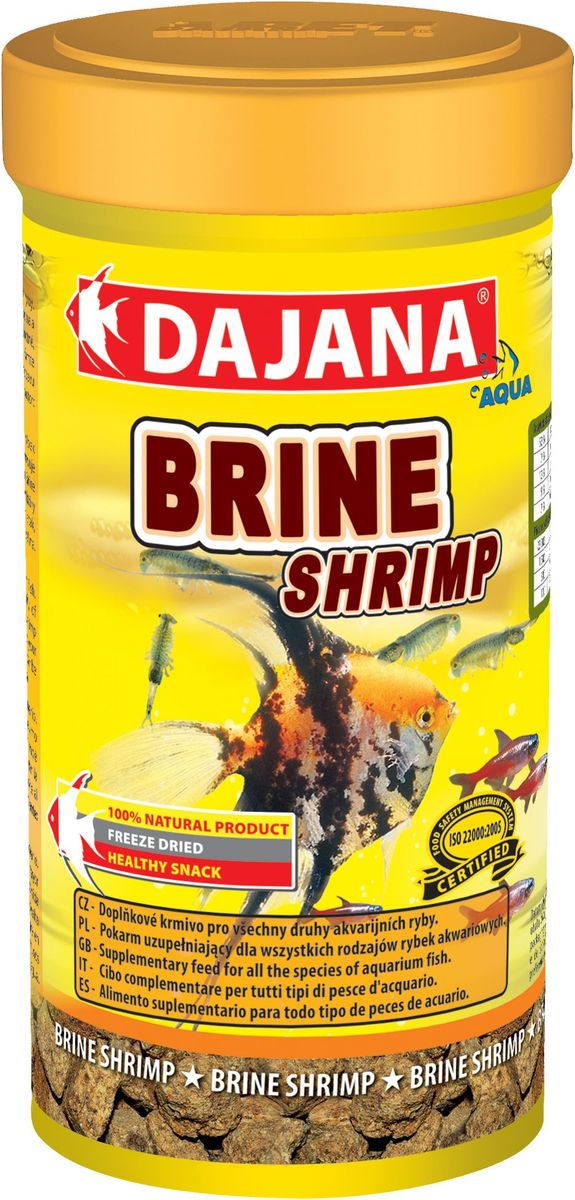 The pufferfish's snail shells help grind down its ever-growing teeth so they don't grow back too long. To ensure a constant supply of these aquatic gastropods, establish a separate aquarium or bath as a breeding factory for physella acuta , coil snails and sand snails. They need hard water with higher pH and GH or they may develop holes in their shells. If you have soft water like we do, we prefer to use 3-5 cm of crushed coral as a substrate and then dose mineral supplements such as Wonder Shell or Seachem Equilibrium as needed. We then feed Pleco Banquet Blocks, Nano Banquet Food Blocks and other high calcium fish foods.
The pufferfish's snail shells help grind down its ever-growing teeth so they don't grow back too long. To ensure a constant supply of these aquatic gastropods, establish a separate aquarium or bath as a breeding factory for physella acuta , coil snails and sand snails. They need hard water with higher pH and GH or they may develop holes in their shells. If you have soft water like we do, we prefer to use 3-5 cm of crushed coral as a substrate and then dose mineral supplements such as Wonder Shell or Seachem Equilibrium as needed. We then feed Pleco Banquet Blocks, Nano Banquet Food Blocks and other high calcium fish foods.
3. Acetic oysters
Typically, spawning fish such as tetras, rainbowfish and killifish produce tiny fry that are too small to eat normal fry food. Acetic oysters are harmless white roundworms that are very easy to breed and ideal for feeding fry until they are large enough to eat Artemia babies.
Simply fill a wine or long-mouth bottle with 50% apple cider vinegar, 50% dechlorinated water and a few apple slices.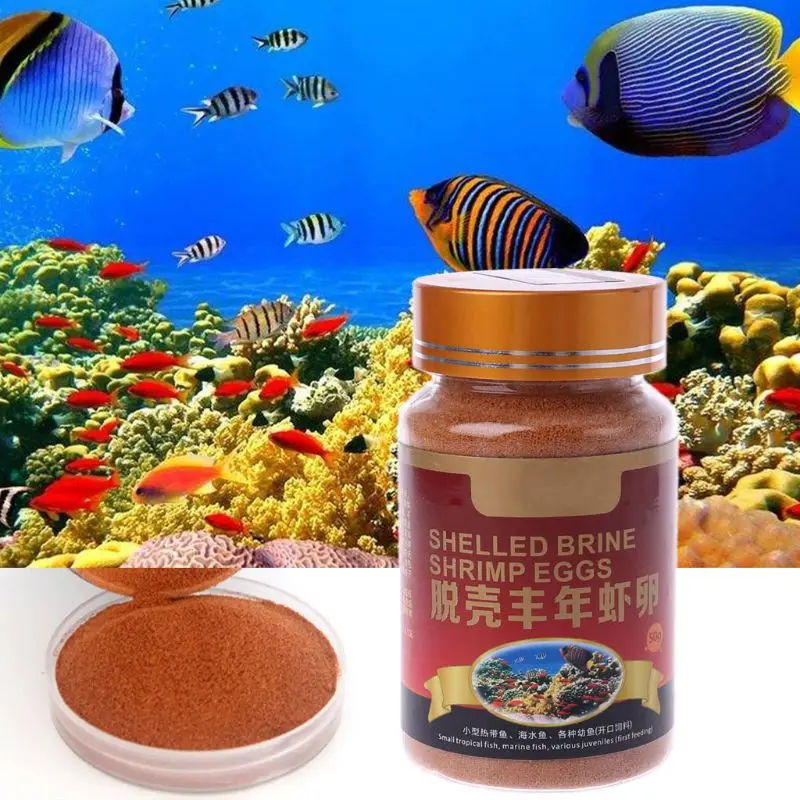 Once the vinegar oysters have multiplied enough, you can harvest them by adding some filter floss and dechlorinated water to the neck of the bottle to make the oysters float out of the vinegar into fresh water. Then use a pipette to remove some of the oysters and feed them to the fish fry.
Once the vinegar oysters have multiplied enough, you can harvest them by adding some filter floss and dechlorinated water to the neck of the bottle to make the oysters float out of the vinegar into fresh water. Then use a pipette to remove some of the oysters and feed them to the fish fry.
4. Microworms
Parrot cichlid fry eat microwormsBanana worms, annelids and microworms are nematodes or roundworms that are also used as food for live fish. They are slightly larger than vinegar oysters, but still smaller than brine shrimp, so they can be fed as tiny fry. We like to grow these crops in small plastic instant mashed potato containers. Cut a breathing hole in the lid of a plastic container and fill it with filter thread to prevent unwanted pests from entering. To collect them, simply run your finger along the walls of the plastic tub where the microworms have climbed, and then dip your finger directly into the aquarium to feed the fish.
5. Daphnia
These aquatic crustaceans are approximately 1–5 millimeters long and are therefore excellent food for small and medium-sized fish.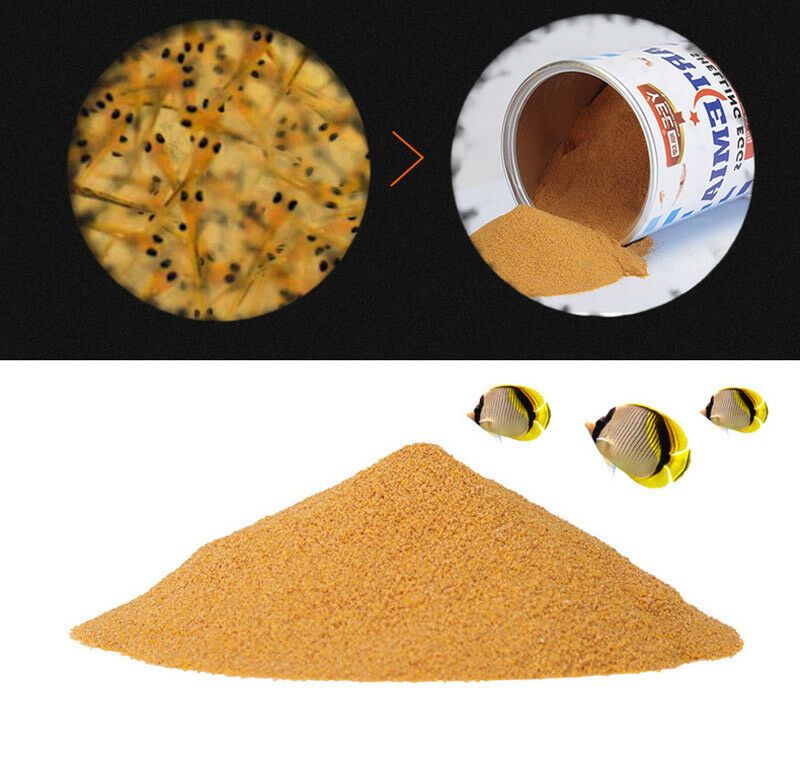 They reproduce fairly quickly, so to keep the water parameters stable and prevent population declines, we recommend keeping them in as much water as possible. For water changes, use old aquarium water or old dechlorinated water, as these are very sensitive to chlorine.
They reproduce fairly quickly, so to keep the water parameters stable and prevent population declines, we recommend keeping them in as much water as possible. For water changes, use old aquarium water or old dechlorinated water, as these are very sensitive to chlorine.
In addition, prolonged exposure to light and lower temperatures around 20°C are preferred for optimal reproduction. Daphnia are filter feeders, so whenever the water is no longer cloudy with food, give them active dry yeast, green water, or spirulina powder. They are easy to collect by slowly scooping up water with a small-mesh aquarium net.
6. Infusoria
What do most newborn fish eat in the wild? Usually microorganisms such as microalgae, protozoa and invertebrate larvae. Therefore, many fish farmers grow their own cultures of freshwater plankton (i.e. ciliates) to feed the tiny fry. There are many methods, but one of the most popular is to fill a large jar with a few liters of old aquarium water and squeeze some flour out of the filter media.
Add a 3 cm piece of banana peel or ½ teaspoon of instant yeast to feed your ciliates. For faster results, heat the water to 26-27°C and after a couple of days you will see tiny moving dots. If the water turns from cloudy to clear, then the ciliates eat up all the food you provide, and the culture is ready to be harvested. Suck out some water with a pipette and feed it to the fry.
7. Aquatic worms
Live aquatic worms Lumbriculus variegatus are excellent food for bottom dwellers and many breeders find this to be the best way to improve the condition of corridor catfish. They can be difficult to propagate at home, which is why farms in the United States grow large-scale cultures of aquatic worms in artificial ponds. You can usually buy worms either at your local fish store or online directly from farms. When you receive them, pour the worms into a fine mesh fishnet and rinse thoroughly with dechlorinated water chilled to 4-13°C.
Keep the worms in a wide, shallow container to avoid crowding more than 3 cm.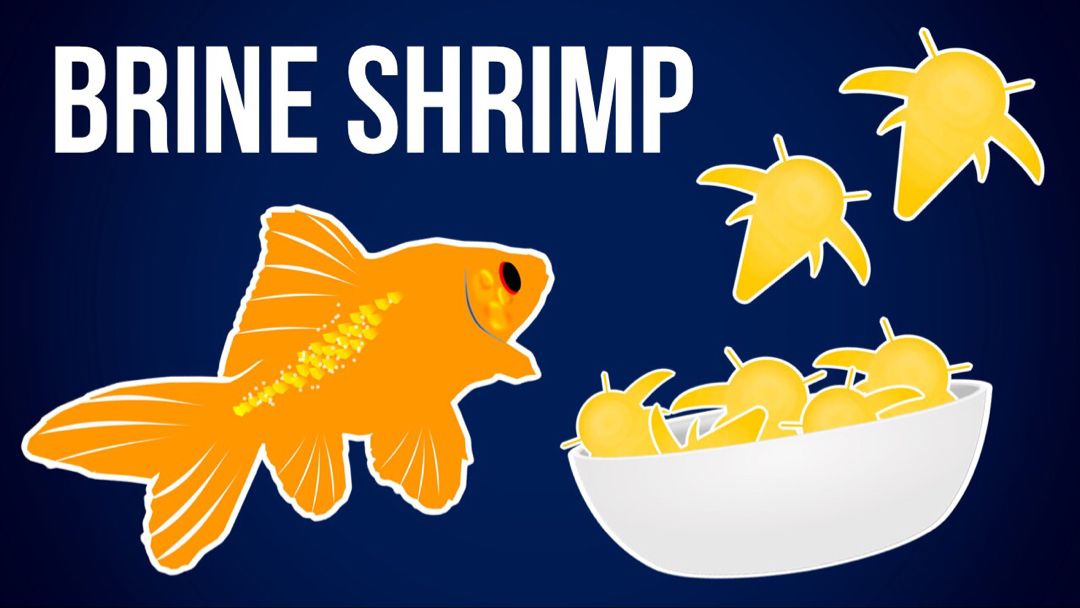 Pour enough cold dechlorinated water to cover the worms and place the container (without the lid) in the refrigerator. To keep your worms alive until they are fed to your fish, repeat this process of washing the worms every day with pre-chilled, dechlorinated water or they will quickly contaminate the water.
Pour enough cold dechlorinated water to cover the worms and place the container (without the lid) in the refrigerator. To keep your worms alive until they are fed to your fish, repeat this process of washing the worms every day with pre-chilled, dechlorinated water or they will quickly contaminate the water.
8. Grindal worms and nematodes
Once your fry are done with vinegar oysters and microworms, you can switch to grindal worms (about 0.5 mm in diameter) and nematodes (about 1 mm in diameter). Start by sterilizing the substrate (such as organic potting soil, peat moss, or coconut fiber) from mites and other pests. You can use the oven to heat the dirt for 30 minutes at 82-93°C, or dampen the substrate and microwave it in 9-minute intervals.0 seconds until it reaches 82-93°C.
Place the substrate in a plastic container or tub and cover until cool; add some dechlorinated water to dampen it some more if needed. Then add a starter worm culture and some food (such as bread and yogurt, oatmeal, instant mashed potatoes, or even fish food) to the surface of the substrate.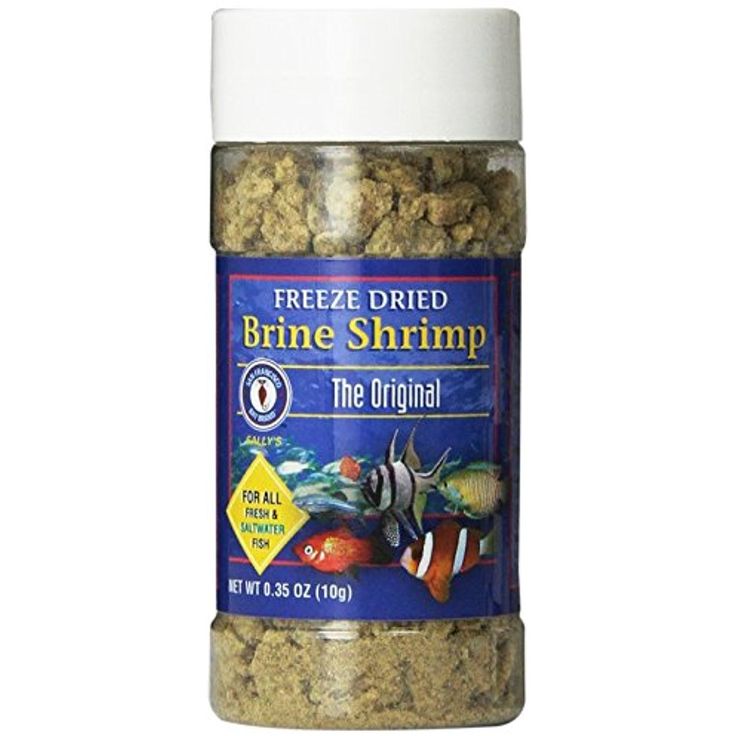 Place the cup lid on top of the food. Next, cut a breathing hole in the lid of the plastic container and glue a piece of cloth to close the hole and prevent pests from entering. Finally, place the lid on the plastic container.
Place the cup lid on top of the food. Next, cut a breathing hole in the lid of the plastic container and glue a piece of cloth to close the hole and prevent pests from entering. Finally, place the lid on the plastic container.
Grindal worms thrive at room temperature 21-24°C, in which case the nematodes should be stored at around 13°C in a cool cellar or refrigerator. To collect them, remove the lid of the deli cup on top of the food, rub off a few worms with your finger, and dip them into a small bowl of water to rinse them out before feeding the fish.
9. Insects
Large mealworm larvae Insects and insect larvae make up a large part of the natural diet of many fish, and their exoskeletons provide good roughage that helps improve fish digestion. You can buy food insects like crickets, cockroaches, and mealworms from pet stores, and some people even raise their own cockroach colonies. Dung and earthworms are sold at some pet and fishing stores, and can also be grown at home.
To collect insects from the wild without introducing potential parasites, place a bucket of dechlorinated water outside and wait for the mosquitoes to lay their eggs. Use a fine mesh net to collect mosquito larvae from the surface of the water, and remember to harvest every day or they will turn into adult mosquitoes.
10. Live fish
In general, forage fish are known to have a higher chance of spreading disease in your aquarium, and most people don't bother with quarantine of forage fish. In addition, goldfish and minnows contain high levels of thiaminase and when consumed in high amounts can prevent your predatory fish from getting enough thiamine (or vitamin B1) and cause all sorts of health problems. To avoid nutritional deficiencies, it is important to provide a variety of diets, rather than constantly feeding one type of food.
However, some hobbyists raise their own food fish at home to minimize the risk of infection. For example, livebearers (or live-bearing fish) breed very quickly, so removing some of the offspring will help prevent the colony from becoming too large.